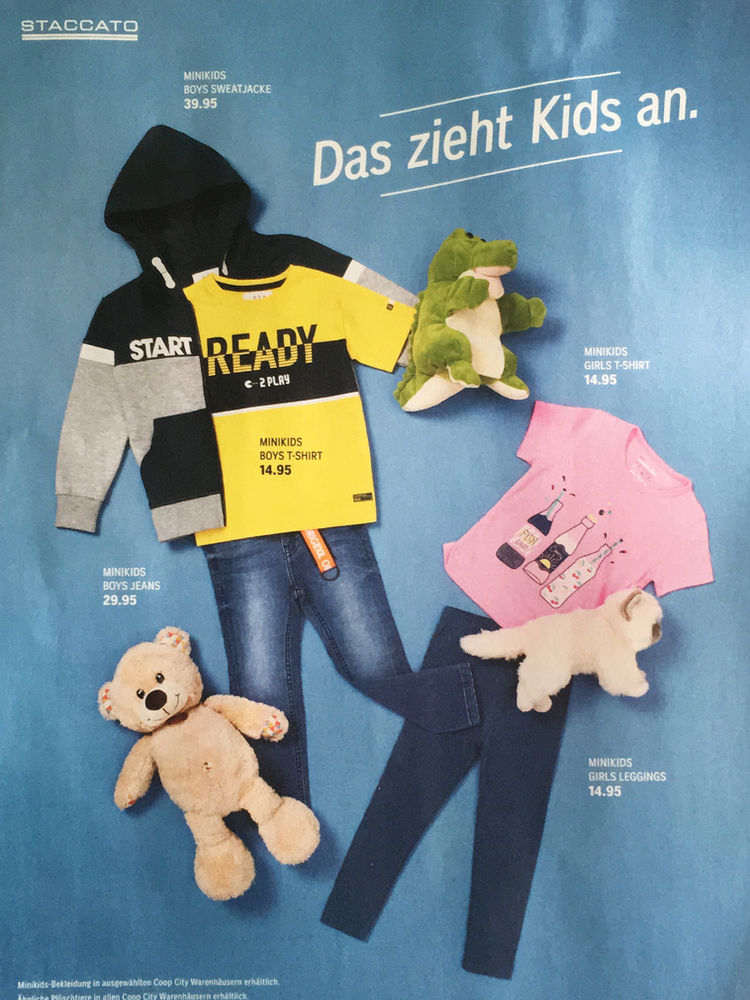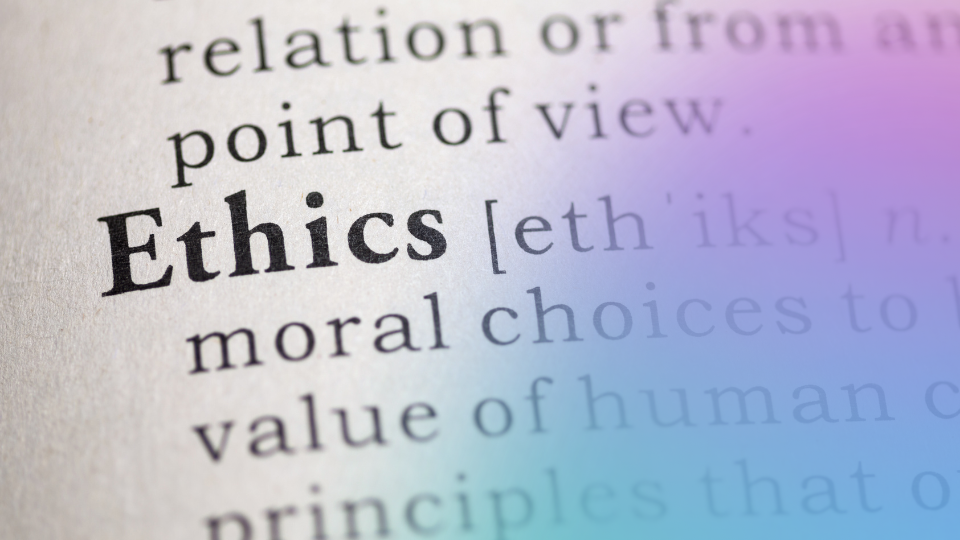Let’s first have a look at the ad’s title. “Das zieht Kids an” has a double meaning in German, meaning both “what kids wear” and “what is attractive to kids”. So the ad proposes what is attractive for kids and what they should wear.
Taking a closer look at the picture, you can see two sets of clothes: one on the left and one on the right. One associates instantly the set on the left with a boy, and the one on the right with a girl, even if there are no actual kids in the pictures.
The girl gets a pink t-shirt, and you can read the words Fun, Limo and Cherry. You see three bottles (something you might share with your friends?) of a bubbly drink. When I look at this t-shirt, the words which come to my mind are pink, bubbly, happy sunny afternoon at the sea, cute, fun & friends being together.
You might think: “And what is wrong with that?”
Let’s first analyze the clothes on the left. You can read the words Start, Ready 2 Play and original. I associate the bright colors and the clear geometrical lines with movement, direction, progress, energy, sport, playing, being wild & ambitious.
Something else seems important to me. The boy clothes are in the foreground, they are bigger, and the way the jeans are laid out suggests movement, while the girl’s clothes are in the background, more quiet and modest.
And what about the soft toys?
The girl gets a cat in her lap, one could imagine the girl petting the cat. The boy is displayed with a green dragon, supposedly holding it in his hand and a bear at his feet. One could understand the bear being a ball being kicked. My associations with these animals are the contrary of the cat: wild, dangerous, playful and adventurous.
By the way: have you ever seen a boy’s t-shirt with a cat print on it? This is virtually non-existent, while a dog might only be printed on a girl t-shirt if it’s a puppy.
Let’s go back to my initial question. What has this ad to do with Witty and the fact that it is important to write gender-neutral?
In our socialization, from a very young age on, we literally wear these values explained above. It’s our second skin, and we see them everywhere. We see and get shown where a girl belongs and where a boy belongs.
Later on, when these boys and girls are adults and they read a job ad, their fallbacks are the values they were socialized with. So words in job ads like ambitious, going forward, stepping ahead, stepping in front, going to the max will speak stronger to boys (or men) than to girls (or women). On the other hand, words like support, care, cooperative, cautious will speak to girls. Remember, we were wearing these words during our whole childhood. Even as adults, we carry these values with us unconsciously, and they influence whether or not we find a job posting attractive or suitable.
This is exactly where the Witty comes in. We help companies to write texts in a way that they appeal equally to men and women. We avoid words or phrases that unconsciously activate patterns from our childhood and favor one gender or the other.
What can YOU do?
If you work in HR and have an influence on how job ads are written, pay attention to the wording you use. If you wish, you can test Witty free of charge. You will be surprised how often you unconsciously choose phrases or words that favor one gender or the other.
If you are a parent with children of school age, observe what clothes and messages the children wear. What do the clothes say about your children? What messages do they send? Do these messages suit your child?
The next time you choose clothes or shoes with the children, offer them both girls' and boys' clothes without telling them which one belongs to which gender. If you shop online, this is easy. Just open 2 browser windows, one for boys and one for girls and show them both without comment. Or go to a clothing exchange. Most of the items are sorted by size and not by gender. I have been doing this with my 3 girls for some time now, and I am always amazed by what they like and what they choose.
Take a more conscious look at the magazines and advertisements that are lying around at home or in the doctor's office. What appeals to you? Why? How is the gender represented?
Another good exercise for me are children's books. Children's books often feature a girl and a boy. Read a book to your children and consistently swap the boy's and girl's name. See what happens. Which person is braver in the book? Which one speaks first? Which one takes care if someone gets hurt?
We would love to hear your thoughts.
If you are looking for a digital writing assistant for inclusive language, try out Witty for free. Witty detects non-inclusive language and provides ongoing training on unconscious bias and operationalizes inclusion.





